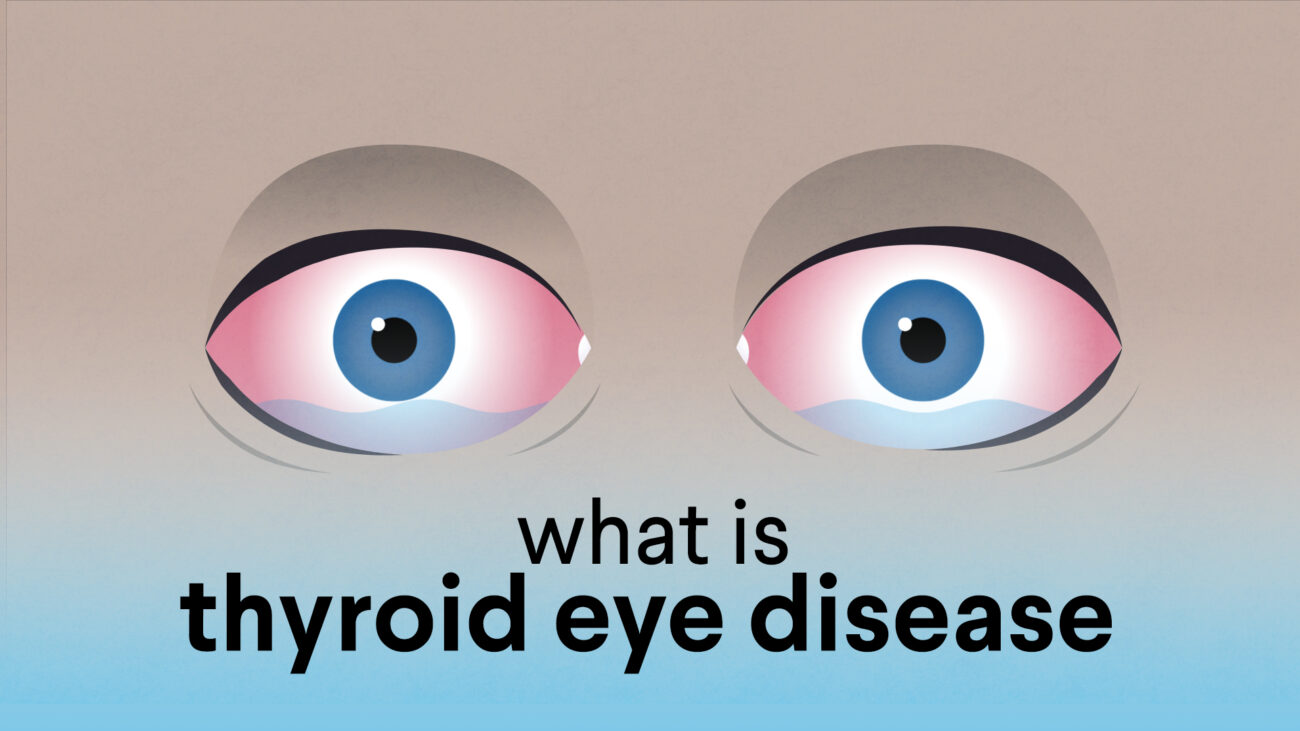According to research, there are approximately 19 in 100,000 individuals who experience thyroid eye disease in a year. TED is thyroid eye disease, and it is an autoimmune disease or condition that is associated with Grave’s disease. It’s also known as Graves’ ophthalmopathy or Graves’ eye disease.
It happens when the immune system attacks the tissues and muscles behind the eye, resulting in inflammation inside and around the eye. The swelling may occasionally begin to force the eye out of place and impair vision.
Many persons who experience eye issues have few symptoms. During active TED, there are things you may do to help manage your symptoms. Surgery and medicines can shorten the disease’s course and alleviate physical issues if the illness is more severe.
In this blog, we will learn about what is thyroid eye disease and tips for managing the irritation. Moreover, you will also get to know about thyroid eye disease treatment through biological infusion therapy:
What is Thyroid Eye Disease?
Thyroid eye disease (TED) is an eye condition caused by Graves’ disease when autoantibodies bind to the thyroid and trigger the release of excessive amounts of thyroid hormone into the body; Graves’ disease, an autoimmune illness, results.
The muscles and tissues surrounding the eyes might become inflamed when autoantibodies that assault the thyroid bind to components inside the eye socket. Because of this, bulging eyes and partially open eyelids are obvious TED signs.
There are 2 phases of TED:
Active Phase
You can feel active eye edema and inflammation when the condition is active. This stage may go on for months or even years. The severity of symptoms can change over time.
Chronic stage
During this protracted stage, symptoms level off. During the chronic phase, physical changes to the eyes and eyelids can remain while changes in symptoms stop.
Due to compression of the optic nerve brought on by swollen tissues in the eye socket, 3% to 5% of TED patients run the risk of permanent vision loss. Additionally, the damage could be brought on by corneal ulcerations brought on by prolonged exposure as a result of the eyelids’ failure to close completely.
Long after the thyroid gland problem has been resolved, signs and symptoms of thyroid eye disease may still exist.
Symptoms
Following are some of the most visible thyroid eye disease symptoms:
- Puffy eyelids
- Bulging eyes
- Eyelids that don’t close completely or pull back more than normal
Moreover, some of the thyroid eye disease symptoms also include:
- Double vision
- Light sensitivity
- Dry eyes
- Pressure or pain in the eyes
- Difficulty moving eyes to see around
These are some other symptoms that people experience in TED. Usually affecting both eyes, thyroid eye disease can also affect just one eye.
TED can be identified by a doctor during a complete physical eye examination. A thyroid test may be required as a follow-up if thyroid abnormalities are suspected but not yet identified.
Thyroid Eye Disease Treatment
If you want to know about how eyes look in thyroid eye disease before and after, then you should compare the eyes before and after treatment. Nowadays, there is a very advanced treatment procedure that has been introduced for thyroid eye disease treatment, which is biological infusion therapy.
Biologic infusion therapy, also known as biologic therapy or monoclonal antibody therapy, is a relatively newer treatment approach for TED. Here are some potential biological therapies that could be used or explored for the treatment of TED:
Teprotumumab:
Teprotumumab is a monoclonal antibody that targets the insulin-like growth factor-1 receptor (IGF-1R). Elevated levels of IGF-1R have been associated with TED.
Teprotumumab has shown efficacy in reducing eye-related symptoms and improving the quality of life for TED patients in clinical trials. It is administered through intravenous infusion.
Rituximab:
Rituximab is another monoclonal antibody that targets B cells, which play a role in the autoimmune response. It has been used off-label in some TED cases to suppress the autoimmune response. This biologic is typically administered through intravenous infusion.
Other Biologics:
Researchers are exploring various other biological agents that target different aspects of the immune response and inflammation involved in TED. These may include antibodies against specific cytokines or inflammatory mediators.
It’s important to note that the use of biologic therapies for TED may not be standard practice, and treatment decisions should be made in consultation with a specialist, such as an ophthalmologist or an endocrinologist, who can assess the severity of the disease, the patient’s overall health, and the potential benefits and risks of these treatments.
Additionally, patient eligibility for biologic infusion therapy and the specific biologic agent used can vary depending on individual circumstances and the latest medical research and guidelines.
Tips To Help Managing Irritation
Well, there are also some tips that you can adapt to avoid irritation in your eyes if you have TED:
Use Eye Drops
Eye drops come in a wide variety of types. Some are available without a prescription, while others require one:
- Artificial tears: These can be purchased over the counter. Your eyes are lubricated, which relieves dryness and discomfort. They are made to resemble the tears that come from your eyes. Preservatives are available both with and without them. It’s recommended to choose a type without preservatives if you use them more than four times per day.
- Lubricating gels: These are thicker versions of artificial tears. They persist longer than synthetic tears do. Many people opt to use them prior to going to bed because they can momentarily cause eyesight blur.
- Steroid eye drops: These drops can be beneficial for persons with TED as they lessen eye pain and edema. Compared to oral steroids, steroid eye drops have fewer negative effects.
Even if your eyes are really red, it’s advised to stay away from “red eye relief” eye drops if you have TED. Over time, red eye relief may dry out and irritate your eyes.
Always follow the instructions of your healthcare provider regarding the kind of eye drops you should use and how frequently. Before usage, some drops need to be shaken.
Apply a Cool Compress
Red and irritated eyes might be relieved with a cool compress. The area’s blood flow is reduced by the chilly temperature, which can lessen swelling.
You can get reusable eye masks that you can cold down in the refrigerator or freezer before using. A washcloth soaked in chilly water is another option. You can utilize these as required.
Wear Sunglasses
Wearing wraparound sunglasses can help if you have light sensitivity. You might want to have extra pairs in your car, in a suitcase or backpack, and around the house. They will be available when and when you need them as a result.
Contact Fuse Infusion for Thyroid Eye Disease Treatment
If your doctor has recommended biological therapy treatment for thyroid eye disease, we at Fuse Infusion offer you the best treatment services. We treat thyroid eye disease through medications, which are specialized biologics, and help our patients overcome this chronic disease.
Each Fuse Infusion patient receives direct care and treatment from our licensed professionals throughout biological infusion therapy, providing thorough medical management.
From start to end, each patient receives individualized care. When required, on-call medical professionals are accessible.
At Fuse Infusion, we believe in offering premium-quality services to our patients. So, contact us to receive a biologic infusion today!

